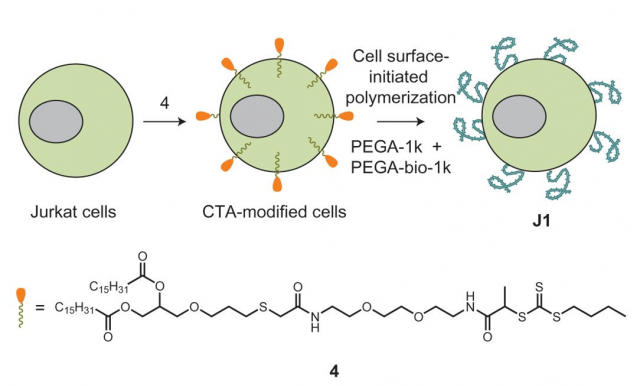
Engineering live cell surfaces with functional polymers via cytocompatible controlled radical polymerization
Niu, J.; Lunn, D.J.; Pusuluri, A.; Yoo, J.I.; O'Malley, M.A.; Mitragotri, S.; Soh, H.T.; Hawker, C.J.
Nat. Chem., 2017, 9, 537-545
Abstract: The capability to graft synthetic polymers onto the surfaces of live cells offers the potential to manipulate and control their phenotype and underlying cellular processes. Conventional grafting-to strategies for conjugating preformed polymers to cell surfaces are limited by low polymer grafting efficiency. Here we report an alternative grafting-from strategy for directly engineering the surfaces of live yeast and mammalian cells through cell surface-initiated controlled radical polymerization. By developing cytocompatible PET-RAFT (photoinduced electron transfer-reversible addition-fragmentation chain-transfer polymerization), synthetic polymers with narrow polydispersity (Mw/Mn < 1.3) could be obtained at room temperature in 5 minutes. This polymerization strategy enables chain growth to be initiated directly from chain-transfer agents anchored on the surface of live cells using either covalent attachment or non-covalent insertion, while maintaining high cell viability. Compared with conventional grafting-to approaches, these methods significantly improve the efficiency of grafting polymer chains and enable the active manipulation of cellular phenotypes.